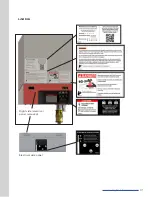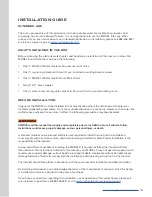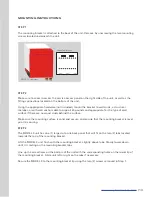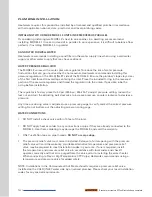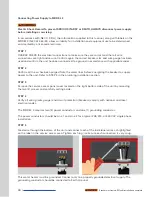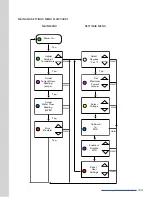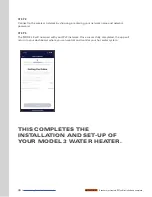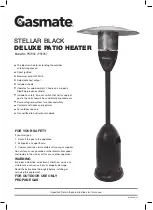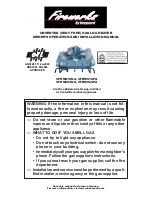
16 |
Breaker must remain OFF until installation is complete.
STEP 2
Connect the inflowing cold water supply to the COLD | INLET connection on the unit.
NOTE: Ensure the plumber’s tape stays clear of the first inlet thread to avoid it entering the COLD |
INLET.
When connecting the inlet water pipe to the unit, use a wrench to hold the unit’s connection, and
another wrench to tighten. Serious internal damage to the water heater can occur if the COLD |
INLET and HOT | OUTLET connections are over tightened or if solder connections were made.
STEP 3
After tightening both fittings at the water heater, open several hot water faucets and allow water
to run though the water heater for at least three minutes. This process purges all the air from the
water lines and MUST be performed prior to turning on the main power to the unit.
If any maintenance is performed on the water heater or the home’s plumbing system that may
introduce air into the plumbing pipes, it is important to turn the power off to the water heater
and purge the air out of the water lines before allowing the unit to power up.
STEP 4
After flushing and filling the heater with water, (with power off) disconnect the COLD | INLET
connection and inspect the filter screen for any debris that may have been flushed through the
system.
ELECTRICAL INFORMATION
Electric Shock Hazard. To prevent SERIOUS INJURY or DEATH, ALWAYS disconnect power supply
before installing or servicing.
Heatworks requires this product be installed and wired by a licensed and qualified electrician.
BEFORE installing this product, make sure the home has sufficient electrical power available
to handle the amperage load of the MODEL 3 decided on after referencing the sizing tables on
page 18. Depending on the region of the country, the temperature of the water supply can vary
between 40°F in winter to 80°F in summer, with an average of 58°F. The output temperature at
maximum flow of the heater is dependent on inlet water temperature.
In the United States, water heaters must be electrically grounded and the electrical installation
must comply with the current National Electrical Code (NFPA 70) and all applicable local codes.
Please refer the regulations that are applicable in your country.
When the heater is not within sight of the electrical circuit breakers, a circuit breaker lockout or
additional local means of disconnect for all non-grounded conductors must be provided that is
within sight of the appliance. (Refer to National Electrical Code 422.31.)
ALWAYS inspect all connections, unions, and the pressure relief valve for leaks before
proceeding to electrical installation.






